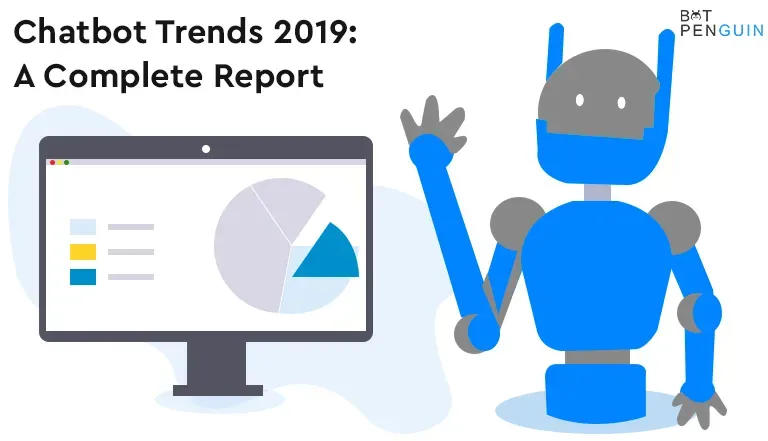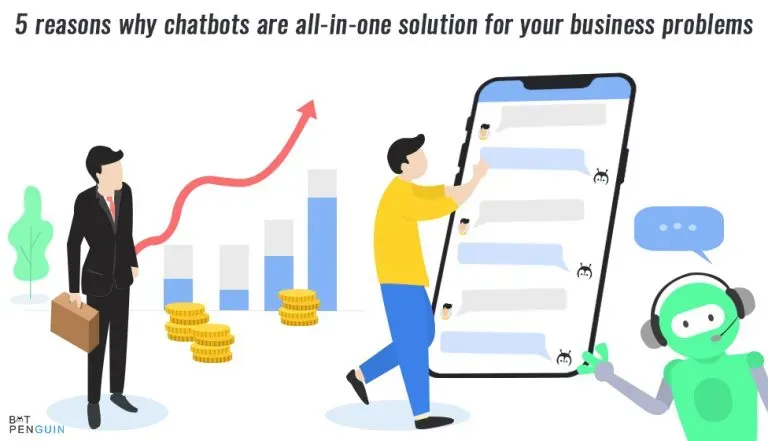Artificial intelligence (AI) has been making significant strides in recent years, and one of its most fascinating developments is ChatGPT. This powerful language model can potentially revolutionize various industries, from customer support to content creation. In this article, we will delve deep into the world of ChatGPT and explore the crucial facts you need to know about this innovative technology.
Understanding ChatGPT
ChatGPT, which stands for Chatbot Generative Pre-trained Transformer, is an AI-driven language model designed to understand and generate human-like responses. Its impressive accuracy and versatility have rapidly become a popular tool in various applications. To fully comprehend ChatGPT's capabilities, exploring its origins, how it works, and its key features is essential.
The Origins of ChatGPT
Developed by OpenAI, ChatGPT represents a milestone in artificial intelligence research. It is based on the GPT family of models, with the most recent iteration being GPT-3. These models continue to evolve as researchers and engineers work on improving their performance and functionality. The aim is to create AI models capable of answering questions, generating relevant content, and understanding the context in a conversation with minimal errors.
The development of ChatGPT resulted from the increasing demand for AI-powered chatbots that could understand and respond to human queries accurately. The team at OpenAI recognized this need and set out to create a language model that could achieve this goal. After years of research and development, ChatGPT was born.
Since its release, ChatGPT has been used in various industries, including customer service, healthcare, and education. Its ability to understand the context and generate relevant responses has made it a valuable tool for businesses looking to improve their customer experience.
How ChatGPT Works
ChatGPT utilizes a deep-learning architecture that allows it to process and understand massive amounts of text data. It generates highly contextual and coherent responses based on the input provided. The model is a collection of patterns and structures learned from various text sources, which it leverages to create accurate and relevant responses to user inputs.
ChatGPT learns to recognize various topics, styles, and ideas within text data during the training process. It then uses this knowledge to produce responses that match the context and style of the input. While it may not always generate perfect answers, its capability to understand and reply intelligently to a wide range of inputs is highly impressive.
One of the critical advantages of ChatGPT is its ability to learn from a wide range of text sources. This allows it to generate responses that are not only accurate but also highly relevant to the user's query.
Additionally, the model can adapt to new inputs and generate responses consistent with the user's previous interactions.
Key Features of ChatGPT
ChatGPT boasts remarkable features that set it apart from other language models. It not only understands context but also generates highly coherent and grammatically correct responses.
Additionally, it can generate creative content while mimicking various writing styles. Its flexibility and adaptability make it an ideal tool for many applications, from customer support to content creation and translation services.
One of the critical features of ChatGPT is its ability to generate highly relevant responses to the user's query. This is achieved through its deep-learning architecture, which allows it to understand the context and intent of the user's input.
Additionally, the model can generate responses consistent with the user's previous interactions, creating a more personalized experience.
In conclusion, ChatGPT is a powerful tool that has revolutionized how we interact with AI-powered chatbots. Its ability to understand context, generate relevant responses, and adapt to new inputs has made it a valuable tool for businesses looking to improve their customer experience. As the technology continues to evolve, we can expect ChatGPT to become even more sophisticated and versatile, opening up new possibilities for AI-powered communication.
Applications of ChatGPT
ChatGPT's impact is already evident in numerous industries due to its wide range of applications. From enhancing customer support interactions to assisting in content creation and language translation, ChatGPT is proving its worth as a versatile and valuable tool.
Customer Support and Chatbots
One of the most popular use cases for ChatGPT is customer support. Businesses employ ChatGPT-based chatbots to handle customer inquiries efficiently and with human-like understanding. These chatbots can answer questions, provide solutions, and guide customers through various processes, reducing wait times and improving overall customer satisfaction.
Additionally, these chatbots can function 24/7, enabling businesses to provide support around the clock without an additional workforce. This helps companies save on operational costs while simultaneously improving the user experience.
Content Creation and Editing
ChatGPT has impressive potential in content creation and editing. Copywriters, marketers, and editors can leverage this AI-based tool to create engaging, well-structured, and grammatically correct content. It can generate ideas, provide topic suggestions, develop outlines, and even produce entire articles based on the input given by users.
Furthermore, ChatGPT can help users overcome writer's block by suggesting creative content ideas or expanding on existing text. Its ability to mimic different writing styles enables businesses and creators to maintain a consistent brand voice across various platforms.
Language Translation
Another significant application of ChatGPT is language translation. ChatGPT can understand and generate text in multiple languages as a multilingual model, making it an ideal tool for translating content. This can prove beneficial for businesses looking to expand their international reach and individuals who require accurate text translations in various languages.
The Technology Behind ChatGPT
To grasp the full capabilities of ChatGPT, it's essential to understand the underlying technology that powers this AI model. Based on Generative Pre-trained Transformers (GPT), ChatGPT draws from a sophisticated training and fine-tuning process that sets it apart from other conversational models.
Generative Pre-trained Transformers (GPT)
GPT is a cutting-edge language model developed by OpenAI. It leverages transformer architecture to process and generate text with high accuracy and coherence. GPT models utilize self-attention, which helps them identify meaningful patterns and relationships within the text. This allows GPT-based models, like ChatGPT, to generate contextually relevant and coherent responses.
Training and Fine-tuning Process
ChatGPT's performance relies heavily on its activity and fine-tuning processes. Initially, the model is pre-trained on a massive dataset containing text from various sources, such as books, websites, and articles.
This helps the model learn grammar, facts, and different writing styles. Following this, the model is fine-tuned on a narrower dataset with the help of human reviewers. This fine-tuning process aligns the model's responses with specific guidelines, improving its performance in generating safe and proper outputs.
Benefits of Using ChatGPT
There are several benefits to using ChatGPT in various applications, from improving user experiences to providing cost and time savings for businesses.
Additionally, ChatGPT can enhance the creative process and impact content production in multiple industries.
Improved User Experience
With its ability to generate coherent, contextually relevant, and human-like responses, ChatGPT significantly improves user experiences in customer support, content creation, and other applications. Users can interact with AI systems more naturally, increasing satisfaction and seamless communication.
Cost and Time Savings
By implementing ChatGPT-based tools, businesses can save on time and costs associated with traditional customer support, content creation, and translation processes. Reduced wait times, 24/7 availability, and efficient content production can all contribute to a more streamlined and cost-effective business model.
Enhanced Creativity
ChatGPT can spur creativity by helping users brainstorm ideas, generate engaging content, and overcome writer's block. Its ability to understand the context and mimic different writing styles enables businesses and content creators to maintain consistency and originality across their work.
Suggested Reading:
Potential Challenges and Limitations
Despite its numerous benefits and applications, ChatGPT has its challenges and limitations. Ethical concerns, system biases, and the potential for misinformation all merit consideration.
Moreover, researchers and developers continually work to overcome technical limitations to improve the efficacy and safety of AI models like ChatGPT.
Ethical Concerns
As with any AI technology, ethical concerns surrounding the use of ChatGPT are prevalent. The potential for misuse, privacy breaches, and the impact on job markets are all essential factors to consider when implementing this advanced tool.
System Bias and Misinformation
ChatGPT may inadvertently reflect biases present in the data used to train the model or generate outputs containing misinformation. Addressing these issues requires ongoing research, development, and collaboration between developers, researchers, and users to ensure that AI models like ChatGPT are designed to minimize biases and promote accurate information.
Overcoming Technical Limitations
Despite its impressive capabilities, ChatGPT still faces technical limitations that can impact its performance. Issues like the occasional generation of irrelevant or nonsensical responses require further research and improved training techniques to provide even better and more accurate AI systems in the future.
The Future of ChatGPT and AI Conversational Models
The future of ChatGPT and AI conversational models looks promising, with ongoing research and development driving improvements in performance, capabilities, and applications. As industries continue to adopt AI tools, the role of AI in shaping the future of communication will become even more significant.
Ongoing Research and Development
Researchers and developers are continually working to improve the performance and functionality of ChatGPT and other AI conversational models. As advancements in AI technology continue, we can expect AI models to become even more sophisticated, intelligent, and versatile in various applications.
Expanding Applications and Industries
As AI models like ChatGPT continue to evolve, we can expect their applications to expand across numerous industries. From healthcare and education to marketing and entertainment, these conversational models will likely have a widespread impact due to their ability to understand and generate human-like responses.
The Role of AI in Shaping the Future of Communication
With AI conversational models like ChatGPT becoming increasingly sophisticated, their integral role in shaping the future of communication is apparent. As these models continue to advance and be integrated into various industries, we can expect seamless, efficient, and intelligent communication between humans and AI systems.



